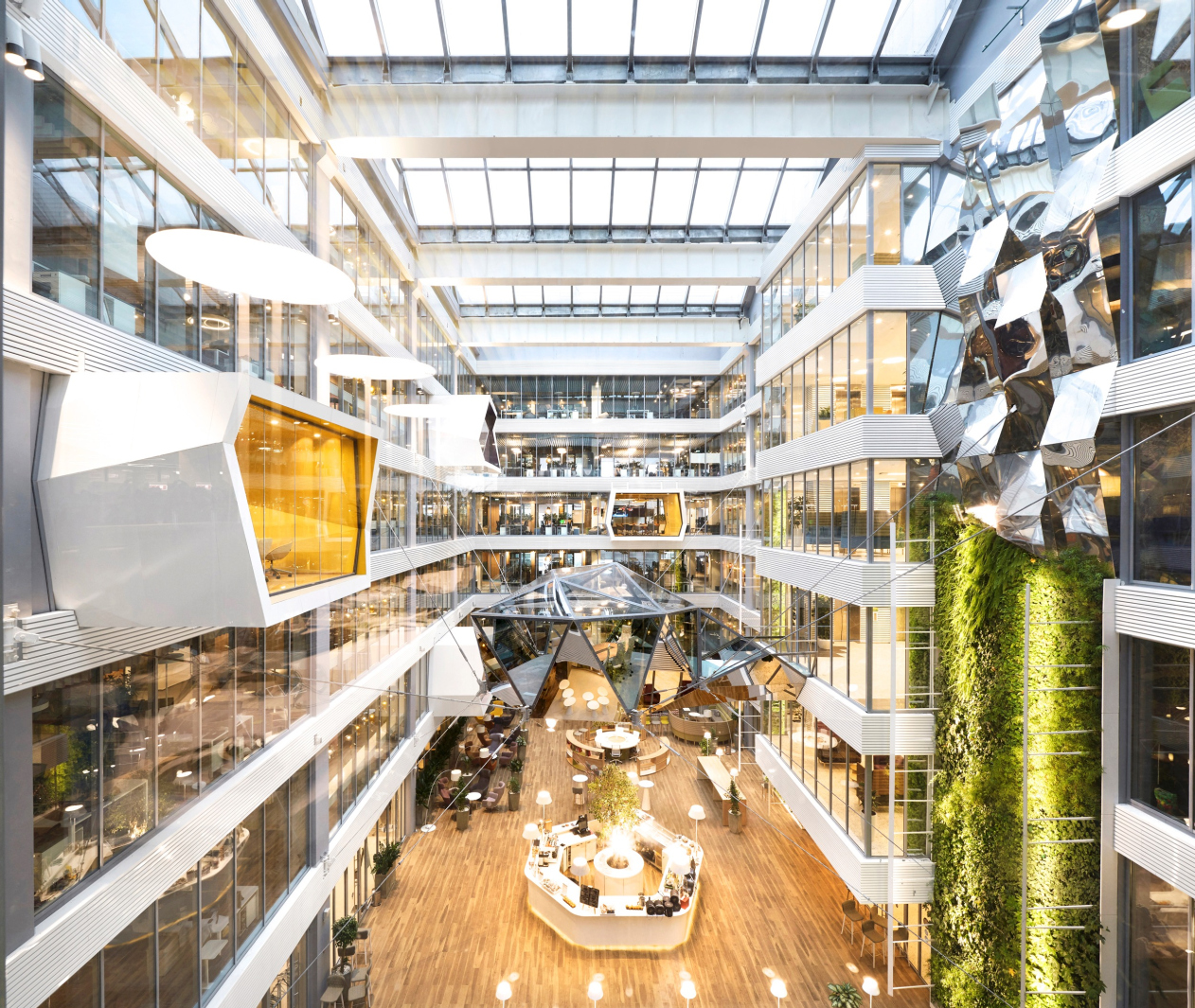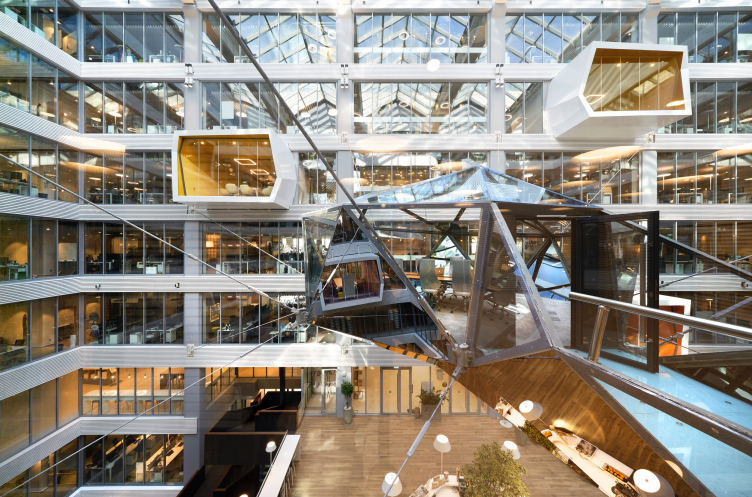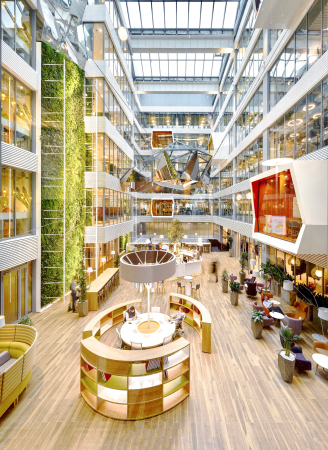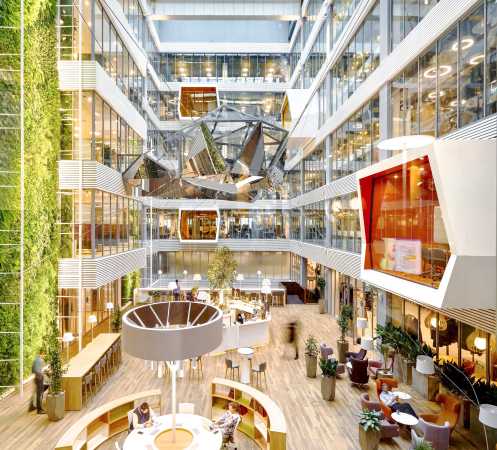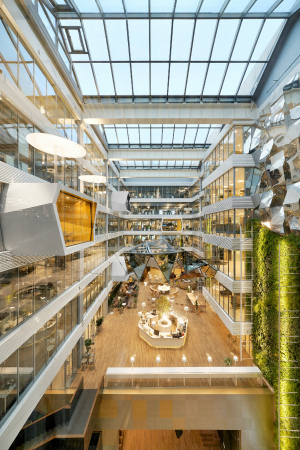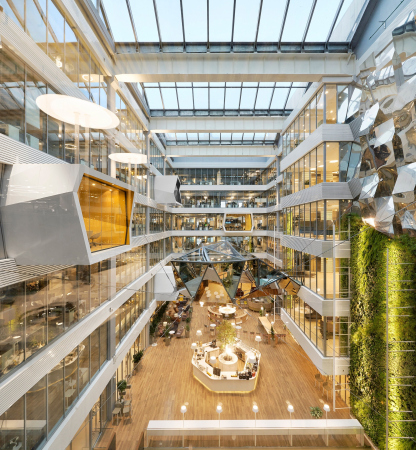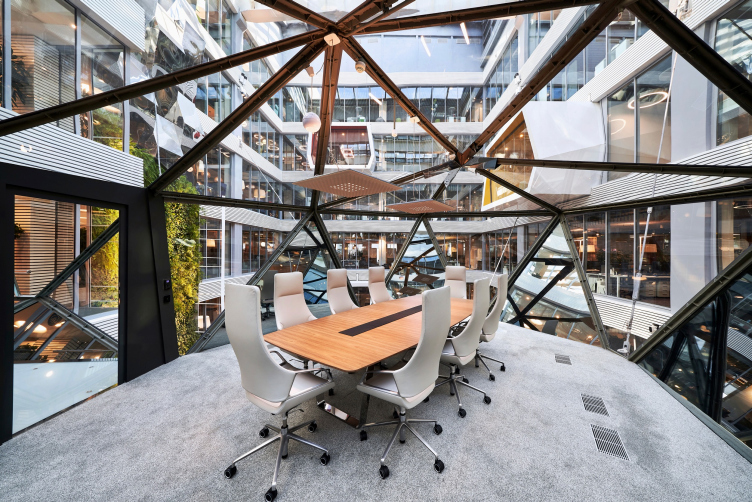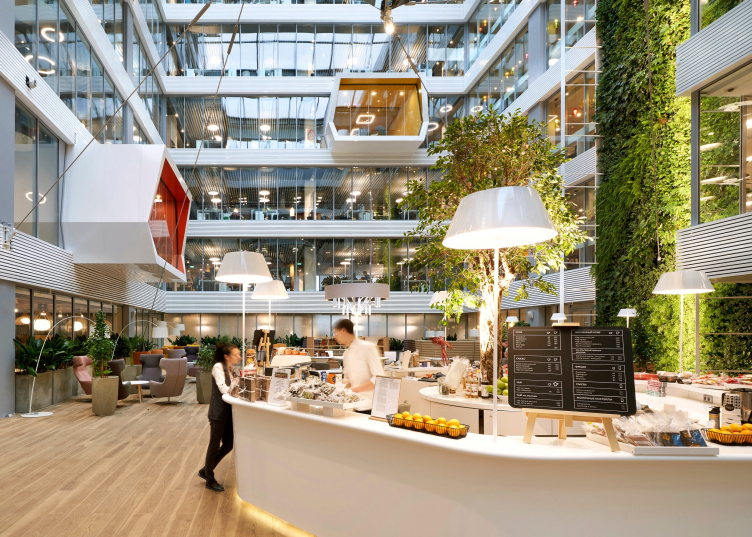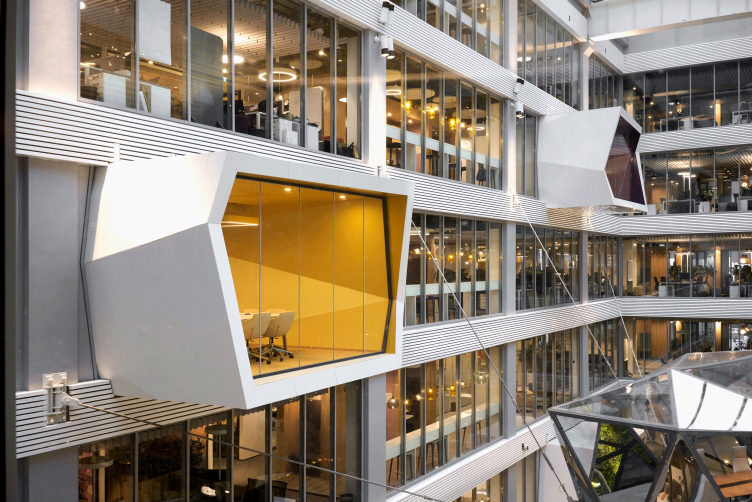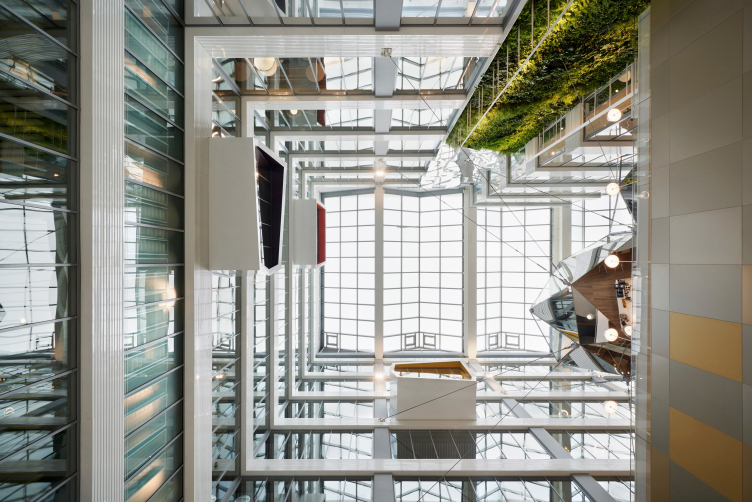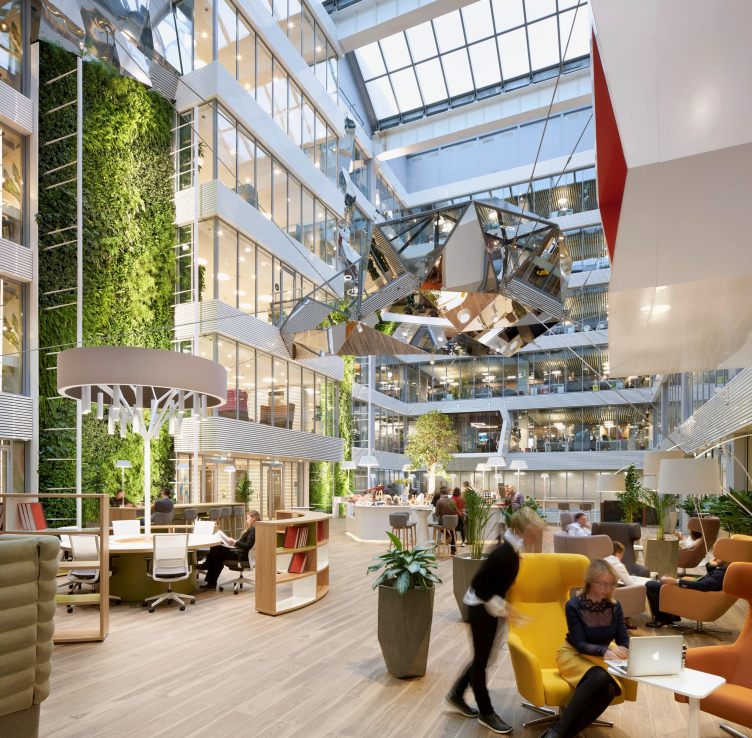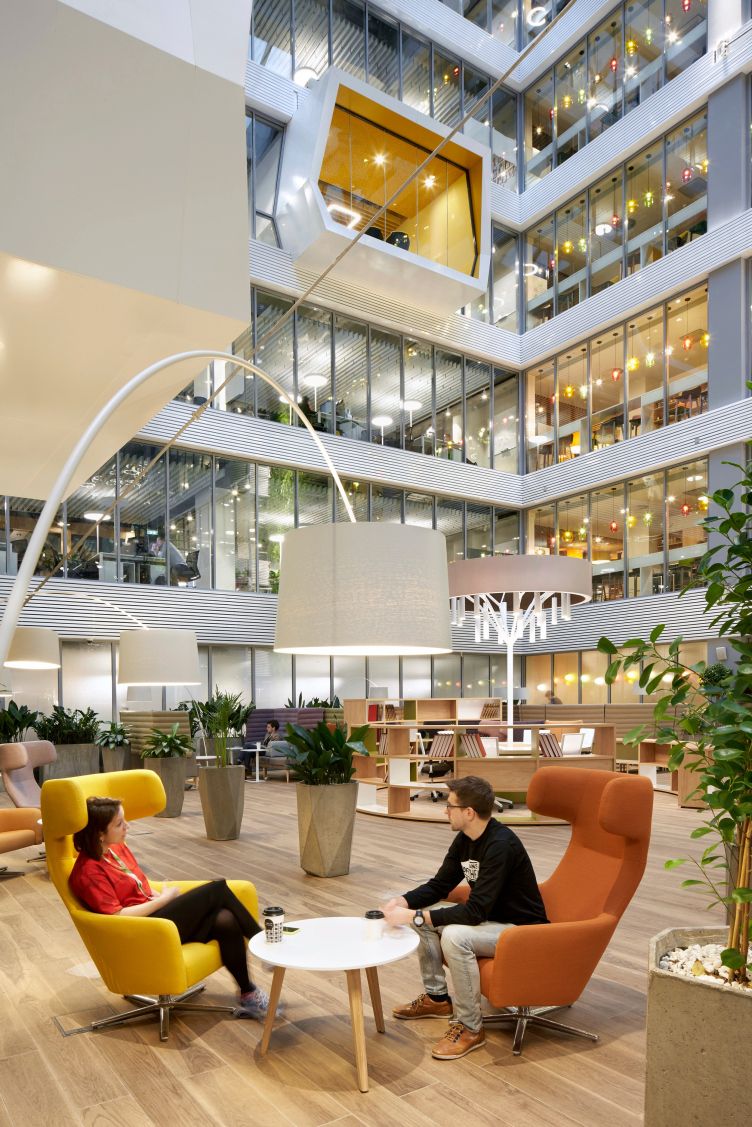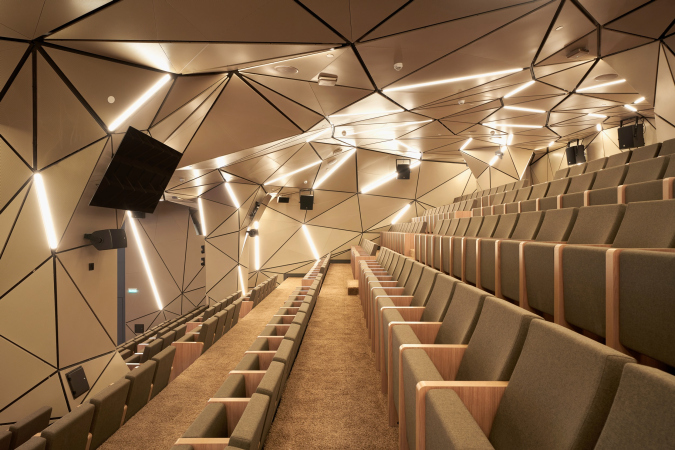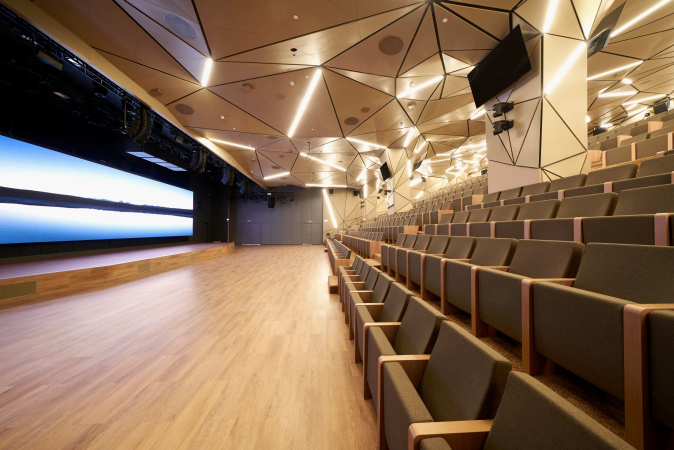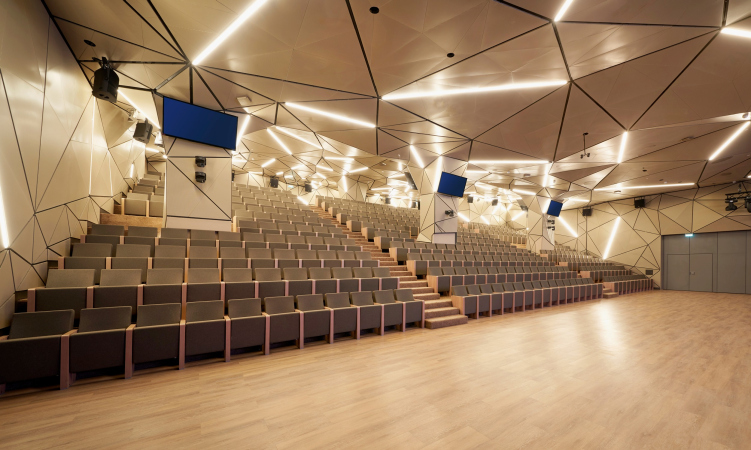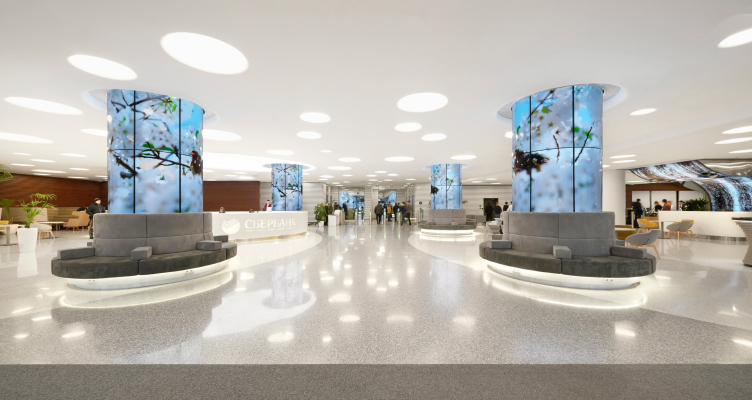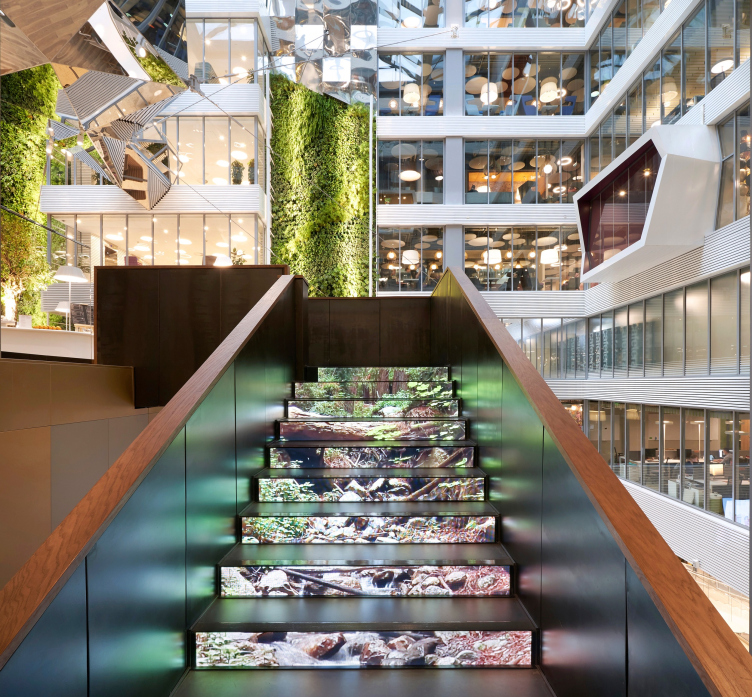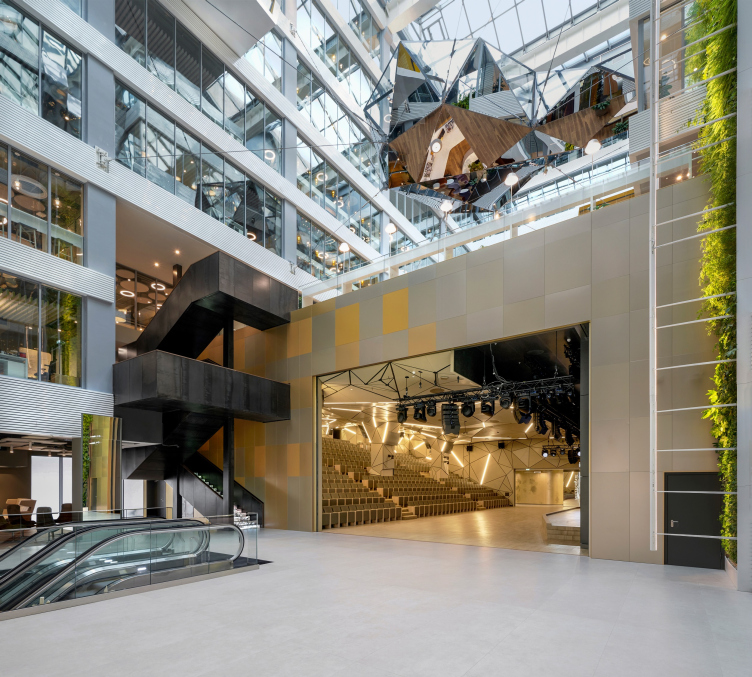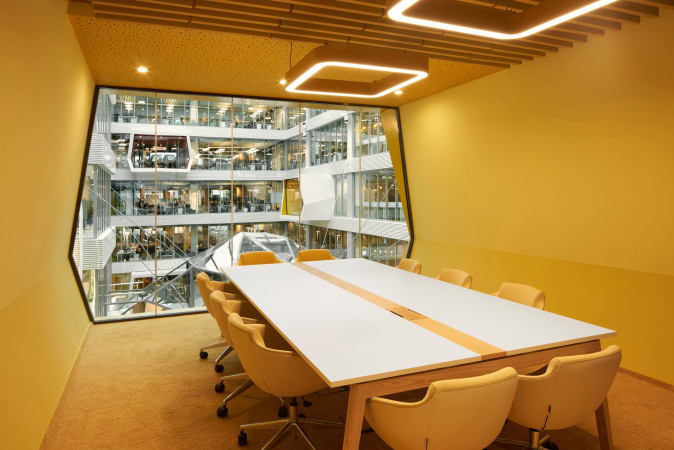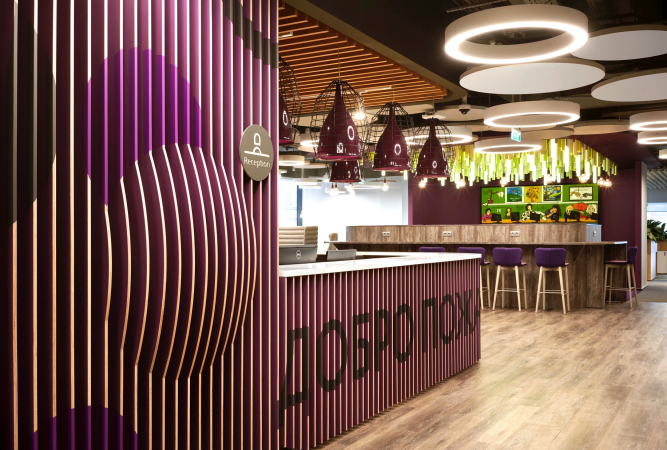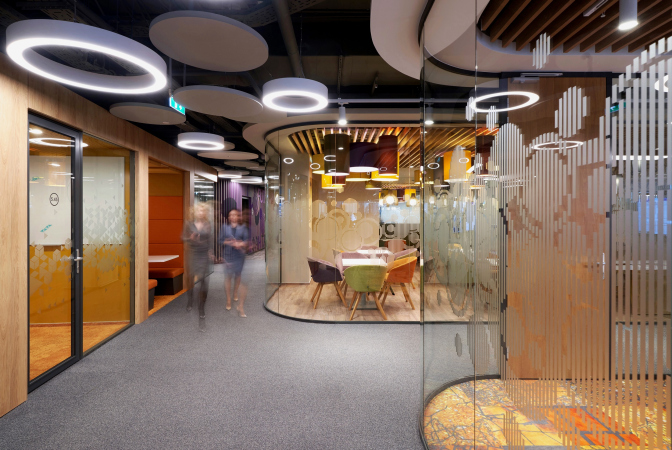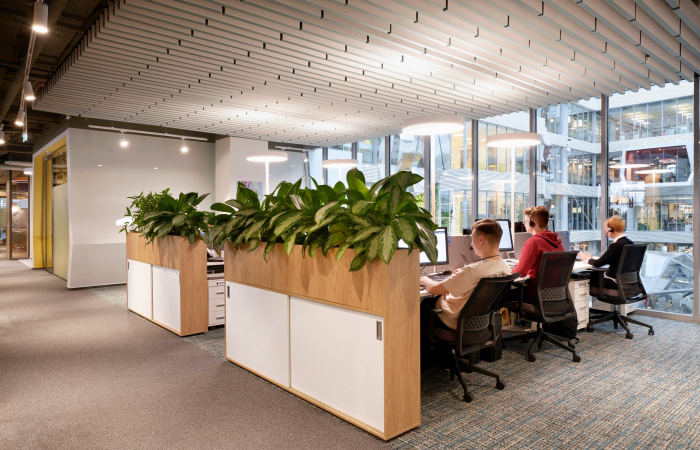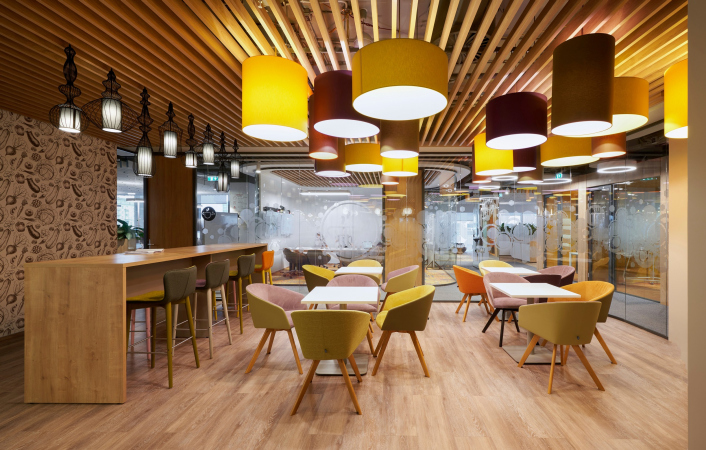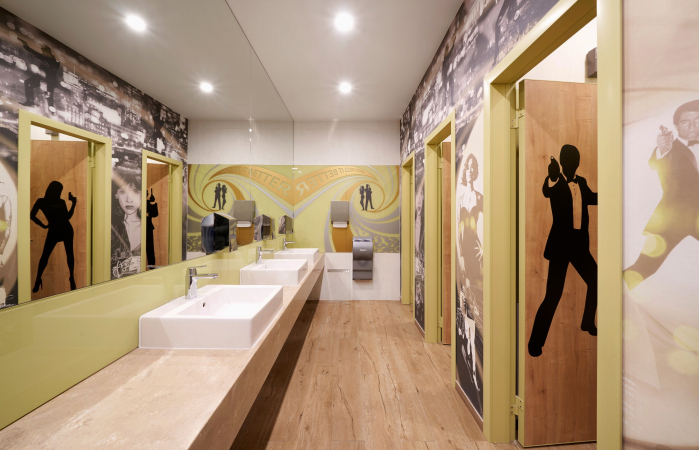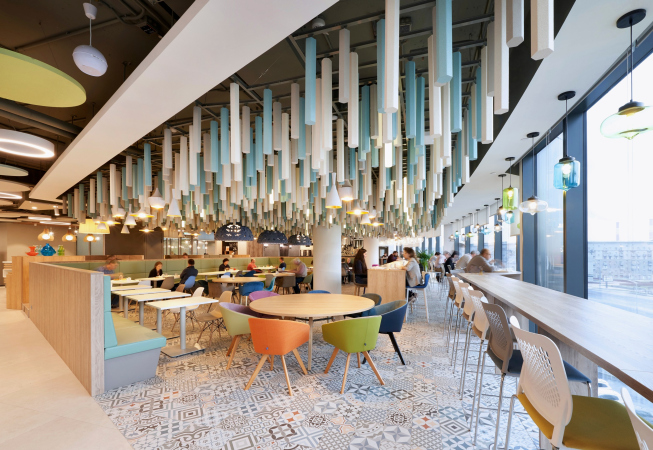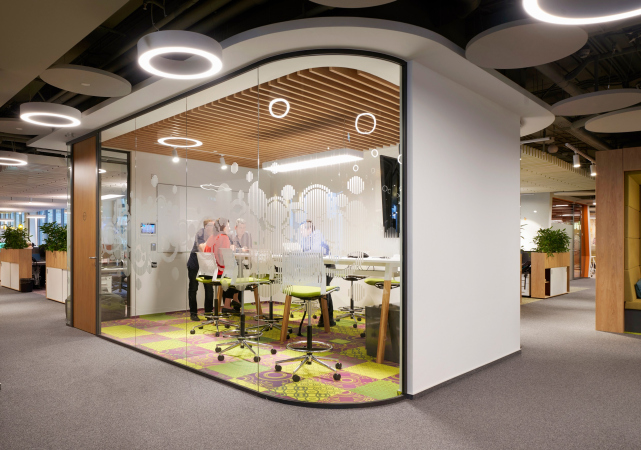The interiors of Sberbank headquarters at Kutuzovsky Avenue, 32
Copyright: Photograph © Sergey Melnikov / provided by PAO Sberbank
The new Sberbank headquarters is situated at the crossing of the Kutuzovsky Avenue and the Third Transport Ring, in the side end of the building overlooking the avenue, which 10 years ago was known as “Mirax Plaza”, and is now developing as the future grand-scale “Sberbank City”. The total area of the interior of the headquarters is more than 62 000 square meters; there is also a 4-level parking garage underneath the building. The realization of this large-scale project took only a year and four months. “The team of Swiss and Russian architects came up with a sophisticated plan for total reorganization of the building with simultaneous introduction of new functions and changing the construction solutions, which made it possible to turn it into a unique office complex” – the authors of the project specify.
The nucleus of the headquarters is a roofed atrium; the galleries of all the floors are glazed. In the center, there is the volume of the “Diamant” meeting room hanging on steel ropes, glittering and reflecting everything around it. It is connected to the surrounding offices by an overpass on the third-floor level, the “diamond” name corresponding to the shape of the meeting room, whose faceted geometry is composed of triangular surfaces.
The upper facets of the hovering volume are made of glass, and one can see the whole atrium from the inside. The bottom triangles are mirror-like, and they reflect the floor, mixing the flares and reflections. This volume serves as the main iconic highlight of the headquarters space; construction-wise, it “consists of a hidden bearing floor frame and a slim framework” – the press release says.
The interiors of Sberbank headquarters at Kutuzovsky Avenue, 32
Copyright: Photograph © Sergey Melnikov / provided by PAO Sberbank
The atrium is also livened up by “televisions” of the other meeting rooms, whose contours also feature a matching jagged outline, while the inner walls are painted rich yellow, orange, and purple. This makes the shimmering of the interiors behind the glass look bright and attractive, giving them a likeness to precious stones, which resonates with “Diamant” in the center of the space. Let us also note here that the same colors are used in the armchairs and spotlights, running like a “golden (well, rather, multicolored) thread” in the other elements of the interior design.
The interiors of Sberbank headquarters at Kutuzovsky Avenue, 32
Copyright: Photograph © Sergey Melnikov / provided by PAO Sberbank
The interiors of Sberbank headquarters at Kutuzovsky Avenue, 32
Copyright: Photograph © Sergey Melnikov / provided by PAO Sberbank
The space of the atrium is full of light, both at the expense of the ambient light and the translucent roof, and also thanks to the white color of the bands between the floors and the electric light that penetrates the glass of the galleries, merging with the sunlight. The two vertical gardening walls, each 20 meters high, and the wooden tone of the floor accentuate the environmental message of the interior design. The atrium serves as the space for recreation and communication; there are bars, cafes, and lounges in it.
The interiors of Sberbank headquarters at Kutuzovsky Avenue, 32
Copyright: Photograph © Sergey Melnikov / provided by PAO Sberbank
The interiors of Sberbank headquarters at Kutuzovsky Avenue, 32
Copyright: Photograph © Sergey Melnikov / provided by PAO Sberbank
The interiors of Sberbank headquarters at Kutuzovsky Avenue, 32
Copyright: Photograph © Sergey Melnikov / provided by PAO Sberbank
The offices are designed in accordance with the agile concept, the trendy modern approach that first of all means flexibility and versatility. The architects were able to place the workspaces “not only along the outer facade of the building, but also along the inner contour, overlooking the green atrium. The modular constructions of the office zone provided an opportunity for choosing the working scenarios and scaling the places for team work. Each of them is provided a whole range of tolls for effective work, a few types of meeting rooms and recreation zones” – the authors specify.
The headquarters also contains a multifunctional hall for 500 people, whose walls and ceiling form a sculptural casing, formed, just as the “Diamant” meeting room, by triangular facets – totally, this place consists of 1136 “individual acoustic panels”. There are also linear lights installed in the ribs between the facets. The hall is equipped with a state-of-the-art media complex.
“Each of the floors has a “mood” or a “theme” of its own, also reflected in color” – the architects say. Indeed, the interior is rich in tactile and color impressions, which are at the same time have enough balance to them to facilitate the navigation, and work for emotions, without causing the effect of excessiveness or over-saturation.
For example, at the entrance we are greeted by circular media screen columns, immersed into the reserved white, yet intensely backlit tone of the walls, floor, and ceiling.
The interiors of Sberbank headquarters at Kutuzovsky Avenue, 32
Copyright: Photograph © Sergey Melnikov / provided by PAO Sberbank
The interiors of Sberbank headquarters at Kutuzovsky Avenue, 32
Copyright: Photograph © Sergey Melnikov / provided by PAO Sberbank
The glowing photographs are placed on the vertical planes of the stairs of the staircase – its black volume is inscribed into the atrium and presents a sharp contrast to its light and even glittering colors, as well as the golden glow of the media hall.
The interiors of Sberbank headquarters at Kutuzovsky Avenue, 32
Copyright: Photograph © Sergey Melnikov / provided by PAO Sberbank
The interiors of Sberbank headquarters at Kutuzovsky Avenue, 32
Copyright: Photograph © Sergey Melnikov / provided by PAO Sberbank
Some of the meeting rooms are designed as precious metal bars; other cells have transparent walls with rounded corners of bent glass. We see alternation of facets and curves, triangles and rings, volumetric and graphic strokes, rich colors and monochromatic black and white, as well as local colors and ornaments.
All of this “organized diversity” serves to only to diversify the impressions but also to facilitate the navigation. “Each of the floors has a “mood” or a “theme” of its own, also reflected in color” – the authors of the project emphasize. It is easy to see that the imagery of the interior is not only rich and diverse but also based on the theme of the treasure chest, which, it must be admitted, is the perfect match for its proud title of the headquarters of the “systematically important bank of the Russian Federation”.

